|
||||
|
|
||||
|
||||
|
|
||||
|
|
 German Plenipotentiary: Werner BEST 5.11.1942 - 5.5.1945 |
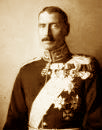 Denmark King: CHRISTIAN X 14.5.1912 - 20.4.1947 |
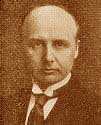 Denmark Prime Minister: Erik SCAVENIUS 9.11.1942-29.8.1943 |
|
||||
|
||||
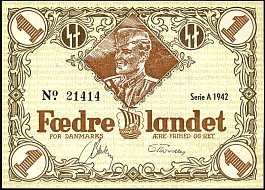 SB.1501 1 Kroner 1942 Series A, No.21414 AB |
Back Image Needed | |||
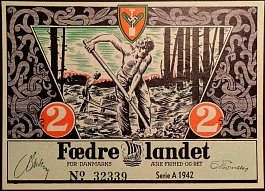 SB.1502 2 Kroner 1942 Series A, No.32339 Joseph Boling |
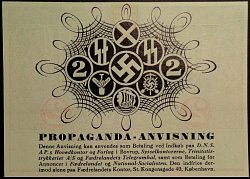 Back |
|||
| SB.1503 - SB.1504 | Images Needed | |||
|
||||
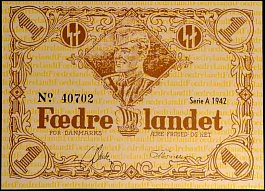 SB.1501x 1 Kroner 1942 Series A, No.40702 Joseph Boling |
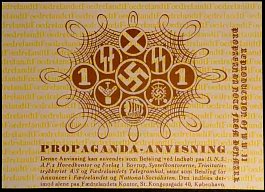 Back |
|||
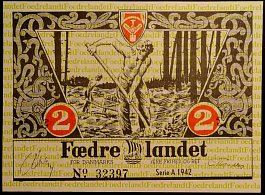 SB.1502x 2 Kroner 1942 Series A, No.32397 Joseph Boling |
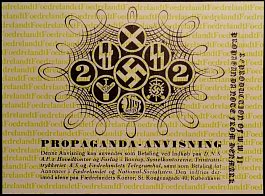 Back |
|||
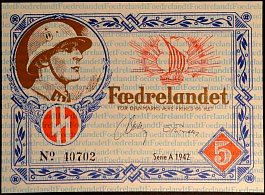 SB.1503x 5 Kroner 1942 Series A, No.40702 Joseph Boling |
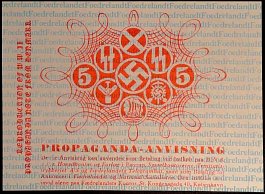 Back |
|||
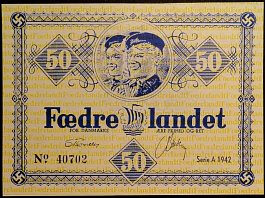 SB.1504x 50 Ore 1942 Series A, No.40702 Joseph Boling |
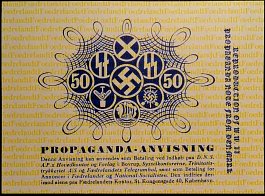 Back |
|||
|
||||
|
========================================================================= About Fædrelandet Notes by Flemming Lyngbeck Hansen, LM190 IBNS
The notes are called "Propaganda-anvisninger" in Danish (Propaganda - money
orders/checks) and they were issued in 1942 by the Danish Naziparty (D.N.S.A.P.,
Danmarks National Socialistiske Arbejder Parti - Danish National Socialist
Workers Party) to support their newspaper "Fædrelandet", in the
denominations 50 (øre), 1 (krone), 2 (kroner) and 5 (kroner). In WW2R the
"50" is listed as the biggest denomination, I consider that incorrect. It is
the smallest. I base that on the serial numbering system of the notes. The
"50" starts with 1...., the 1 starts with 2...., the 2 with 3.... and the 5
with 4.... . This could mean that a "25" (øre) was planned and maybe printed
with numbering starting with 0.... . It would fit naturally into the value
system of 25, 50, 1, 2 and 5. Yet there is no hard evidence of a "25" ever
being made, and no known sources mention this. As correctly described in
WW2R, the notes are not denominated. But the text on the back indirectly indicates, that it is in Danish kroner.
The reason that the notes are not denominated, could come from previous
experience. In 1931-33 another organisation called JAK (their notes are
described in Siegspapermoney catalog) issued notes in kroner, and these
notes were eventually banned by law. JAK then tried to get around the ban by
issuing a series denominated in "andele" / "shares" . That didn't help, they
were banned
too. The same happened to these D.N.S.A.P. notes. In September 1943, three
men were sentenced with fines for producing the notes, and the notes were
confiscated and destroyed. The signatures on the notes are from two of these
men. The left signature is of C.B. Nielsen (Carl Bernhard Nielsen, CEO of "Fædrelandet")
and the right is of C. Thomsen (Carl Henry Thomsen, employee of "Fædrelandet").
The third man sentenced, was Claus Alfred Langgaard Nielsen,
leader of propaganda in D.N.S.A.P. Yet not all notes were destroyed, in the
1970's the notes started showing up in the numismatic community. And in the
1990´s whole sets were sold by coin dealers. Where these notes originated
from, no one knows. One theory is that they came from an estate from a nazi,
and from there went into collectors circles.
"Fædrelandet" ("The Fatherland" in direct translation) was the daily
newspaper of the Naziparty. The first issue came 6 January 1939. It was to
advertise for and/or support this newspaper, the notes were made. The
emblem/logo of the newspaper was/is the Viking ship, shown in the middle of
face of the notes. The text just below says: For Denmarks honor, freedom and
right. If we continue with the face of the notes, the "50" shows two young
people in uniform. They represent N.S.U. - NationalscialistiskUngdom -
National Socialistic Youth. It was the youth movement in D.N.S.A.P. The "1"
shows the logo of the SA. I am uncertain whether the man in the center wears
a SA uniform. The "2" points to something called "lands-arbejds-tjenesten"
in Danish. (The direct translation is something like "land-work-service.)
Their logo is shown at the top. It was a department for workcamps in
D.N.S.A.P., workcamps in which young people, on volunteer basis, could work
for the fatherland and get the correct Nazi spirit. The "5" shows the SS
symbol and an SS soldier. The back are the same on all notes. The swastika
in the center is surrounded with the value to the left and right. At top is
the logo of N.S.U. - the youth movement. It's a solar wheel/solar cross/Odins
cross (it has many names), an old Nordic pre-Christian symbol. To the NW is
the SA logo, to the NE is the SS logo, to the SW and SE are
the logos of the above mentioned work camp department. The SW one shows the
department logo, and the SE shows the logo made especially for leaders in
the department. The bottom logo shows the Viking ship, the logo of the
newspaper "Fædrelandet". The text below says in English: Propaganda - money
order/check).
The word "anvisning" I have found difficult to translate exactly, but the
two words, money order or check, are what I think come closest. The text
continues: This Money order/check can be used as payment for purchases in
D.N.S.A.P. headquarters and publishing company in Bovrup, district offices,
The Trinity printing works inc. and the in the telegram hall of Fædrelandet,
and as
payment for ads in "Fædrelandet" and "National-Socialisten". ("The National
Socialist", another paper of D.N.S.A.P.). It can only be cashed at the head
office of "Fædrelandet", St. Kongensgade 40, København. (Greater King´s
street 40, Copenhagen).
Some of this text needs explanation: Bovrup is a small village in Southern
Jutland, the home of the D.N.S.A.P. leader FritsClausen and headquarters of
the party. The village later gave name to the "Bovrup-files" (Bovrup-kartoteket).
It was a membership list from D.N.S.A.P., which was published after the war,
by a group who was dissatisfied that so many former Nazis could return to
normal life without being tried in court. In 1998 the files were closed, and
only researchers and historians have, after individual permission, access to
the files today.
The Trinity printing works inc (In Danish: Trinitatistrykkeriet A/S) were
based in Copenhagen and did the more sophisticated printing for the party.
It is beyond doubt, but not proven, that it was here, the notes were
printed. The headquarters of "Fædrelandet" were seized by groups in the
resistance movement on May 5, 1945. They used it for printing their
newspaper "Information"
which still exists today, housed in the same offices.
"Fædrelandet" ceased to be printed on May 5th, 1945 when the resistance
movement took over the offices. It reappeared in 1952 and closed again in
1972. It appeared for the third time in 1993 now as a monthly paper,
published to this day. It is now in the hands of DNSB -DanmarksNationalSocialistiskeBevægelse, (DenmarksNationalSocialist
Movement). DNSB has a homepage, and upon checking it, it seems that "Fædrelandet"
is published as an e-paper only. It also looks like that new issues has not
come out since 2007. But I can't be sure, as they are not dating their
stuff. Only the copyright date in the bottom gives a clue.
If the notes were used as indicated on the back, is not known. Some scholars
believe the notes were handed out as rewards for people who had done good
deeds for the newspaper. It is also possible the notes were sold for face
value at meetings etc. to get funds for the newspaper.
|
|
|
![]()